May 16, 2024
Vacuum: The Unity of All Things - 8 Creative Segments by Artist Meng
I still vividly remember how Weiwei solemnly introduced Meng to me,
"Meng paints, creates installations, and writes poetry. He's a young man straight out of the Proustian era!"
It's hard not to be curious, so we went together to Meng's studio located on the west side of London...
That was in 2019.
In the blink of an eye, five years have passed. A lot has happened in these five years.
After the pandemic interrupted everything for three years, Meng went to Japan to learn the art of Noh masks.
He held a solo exhibition at the Nanke Gallery in Shanghai and participated in a residency project in Panama.
As for me, I've also experienced significant changes.
After becoming the curator of R PLUS Gallery, I was eager to have Meng do a solo exhibition.
I invited our mutual friend Weiwei to be the curator.
He came to Tianmuli during a visit back to the country, and it all came together.
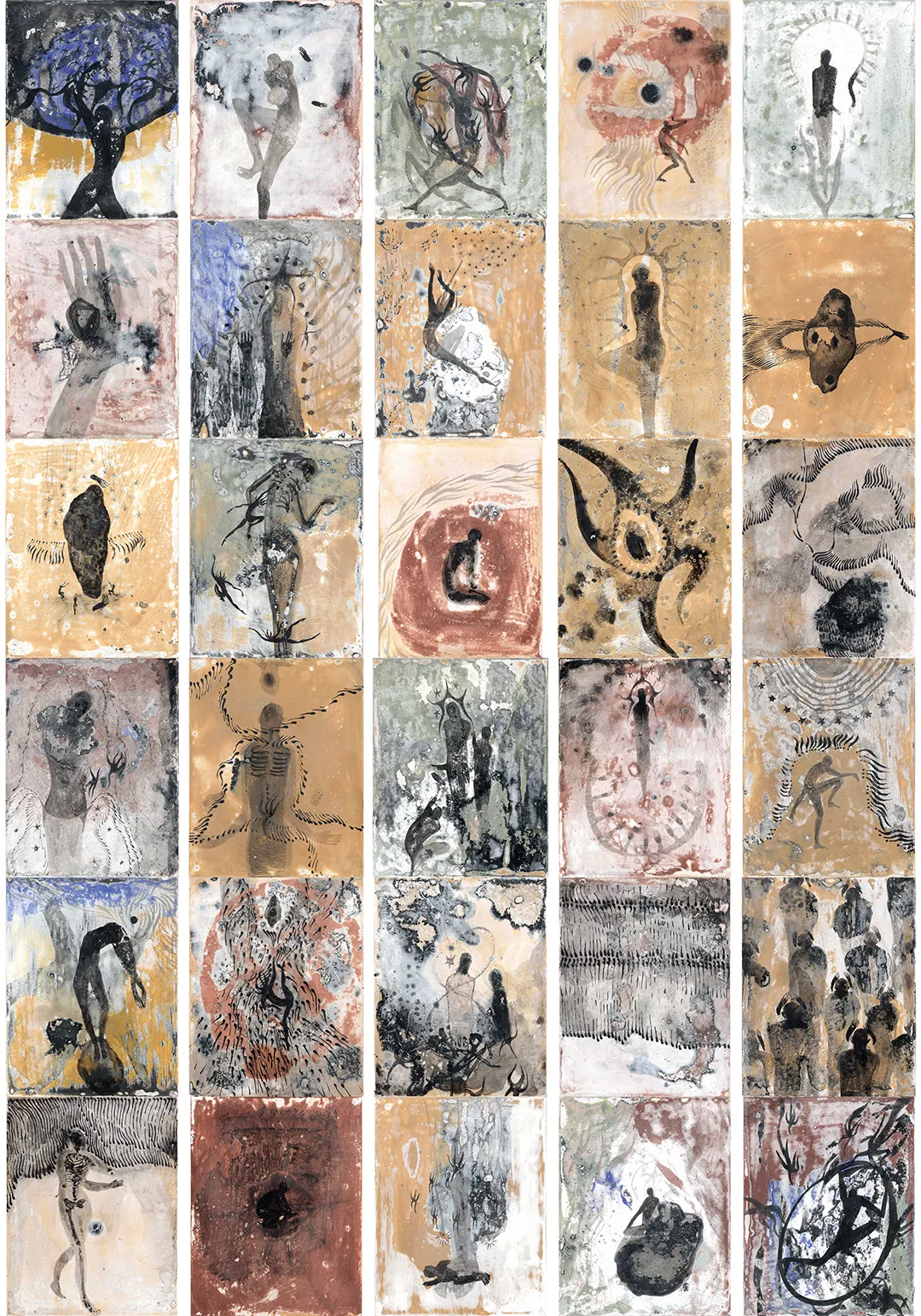
「Vacuum」(1-30)
18h x 14w cm
Magically, Weiwei's home in Paris and Meng's studio in London turned out to be conveniently connected.
Over the past few years,
Weiwei often took the Eurostar through the English Channel and transferred by metro to Meng's studio.
That was Meng's world "beyond the mundane."
Sometimes she helped Meng as an assistant, handling all sorts of strange and unusual materials.
Other times, they would speak in a kind of "jargon" only they understood.
Weiwei recorded all of these moments in her phone's memo app.
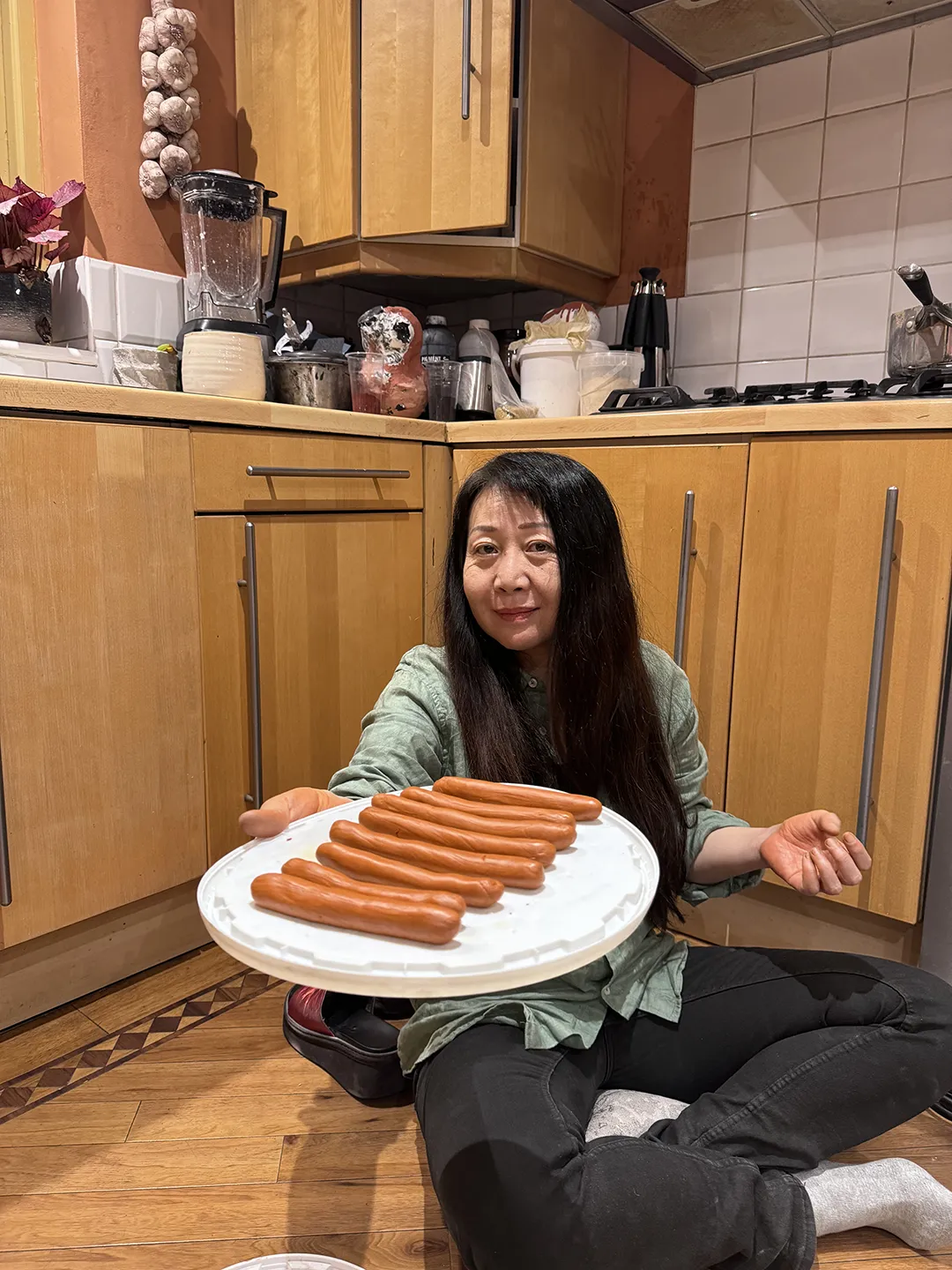
Weiwei (curator)
In recent years, Meng has been collecting materials and stories from Egypt to Morocco,
from Guatemala to Panama, and further into South America, exploring the unknown.
"Life is everywhere, from inorganic to organic, and from organic back to inorganic.
Life and the environment are one.
Then, when you look at the sky, it feels like a meteor streaking across.
One day, if Earth becomes a meteor, it seems like heaven, Earth, and humanity are one, just different slices of time."
Meng is slowly constructing his world.
The phrase "beyond the mundane" perfectly encapsulates his intellectual and life-saddened state.
As the opening on May 26 approaches,
we invite everyone to experience the sound of fragments of time colliding in a black box-like space.
The following are Weiwei's fragmented records.
The timeline is deliberately blurred,
with eight keywords connecting artist Meng's collection and obsession with the sedimentation of time.
01) Useless work
Meng first forcefully kneads and blends the black and white resin clay.
As the white begins to envelop the black, the black gradually reclaims space as spots or streaks.
After some time, the material in his hands resembles a dreamlike ink-washed pebble.
This comforting beauty lasts only for two seconds.
With further kneading, the black dominates completely.
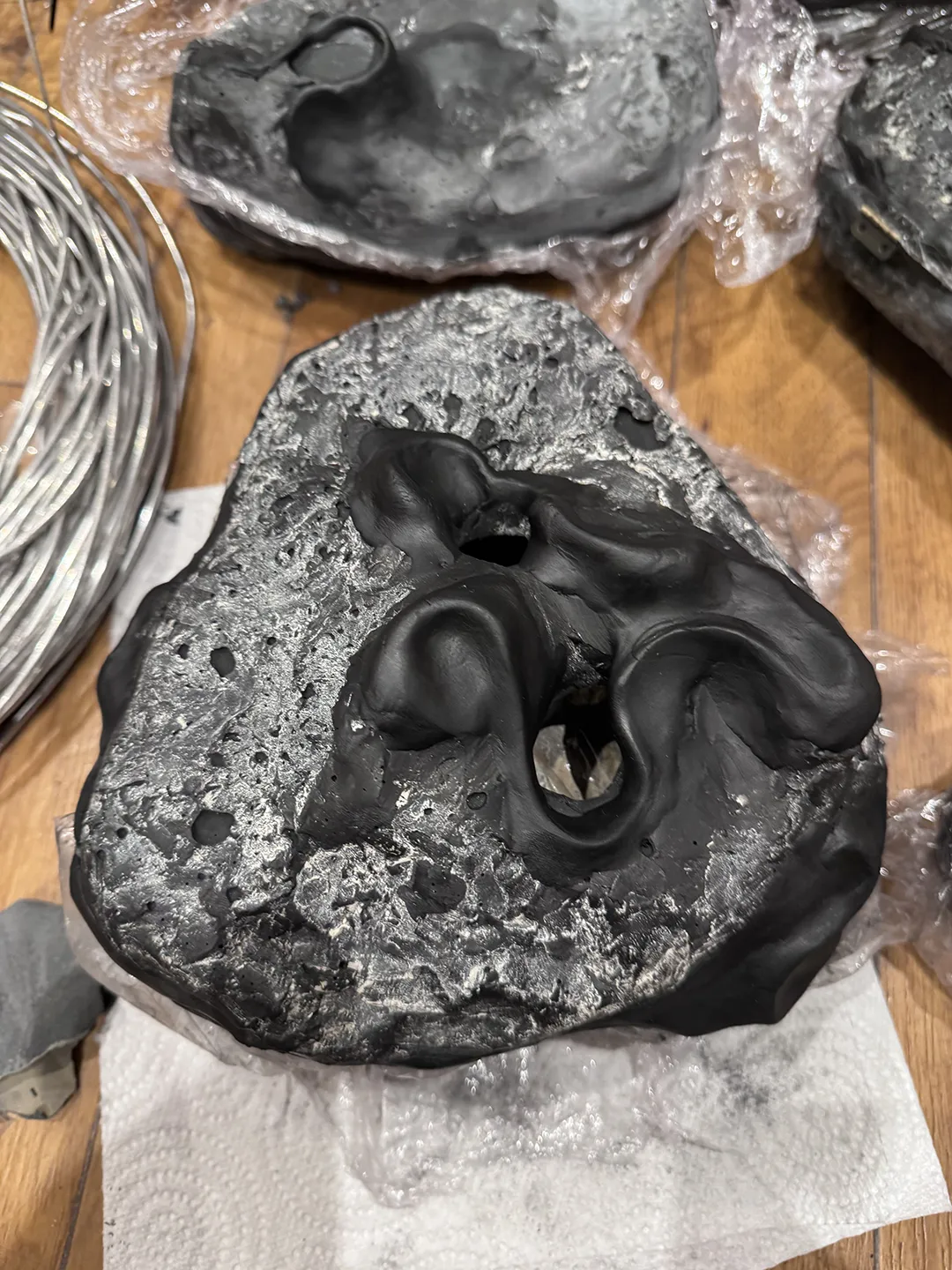
Sculpture Series: Kuiper Samples
Meteorite-resistant appearance, encasing starfish fossils.
He rolls the glossy, black pearl-like clay into thin strips, breaks them apart, and molds them into pea-sized black balls.
His arms grow tired, and his fingertips work like a wound-up machine, pressing one black ball after another onto a wooden board,
as if he is creating a dark, swirling galaxy.
This is a repetitive process over a large area.
The black serves as a dial, and the white represents the ticking of time.
However, something abruptly and shockingly stops this process.
He decisively brushes a white gel-like substance over the black holes of this galaxy,
with the white once again dominating the black.
The current result is both heartbreaking and mesmerizing.
Layer by layer, he adds different materials:
shell powder, soil, mineral powder, cowhide glue, deerskin glue, and rabbit skin glue.
Each layer's presence obliterates the previous one.
Night falls, and he begins to polish...
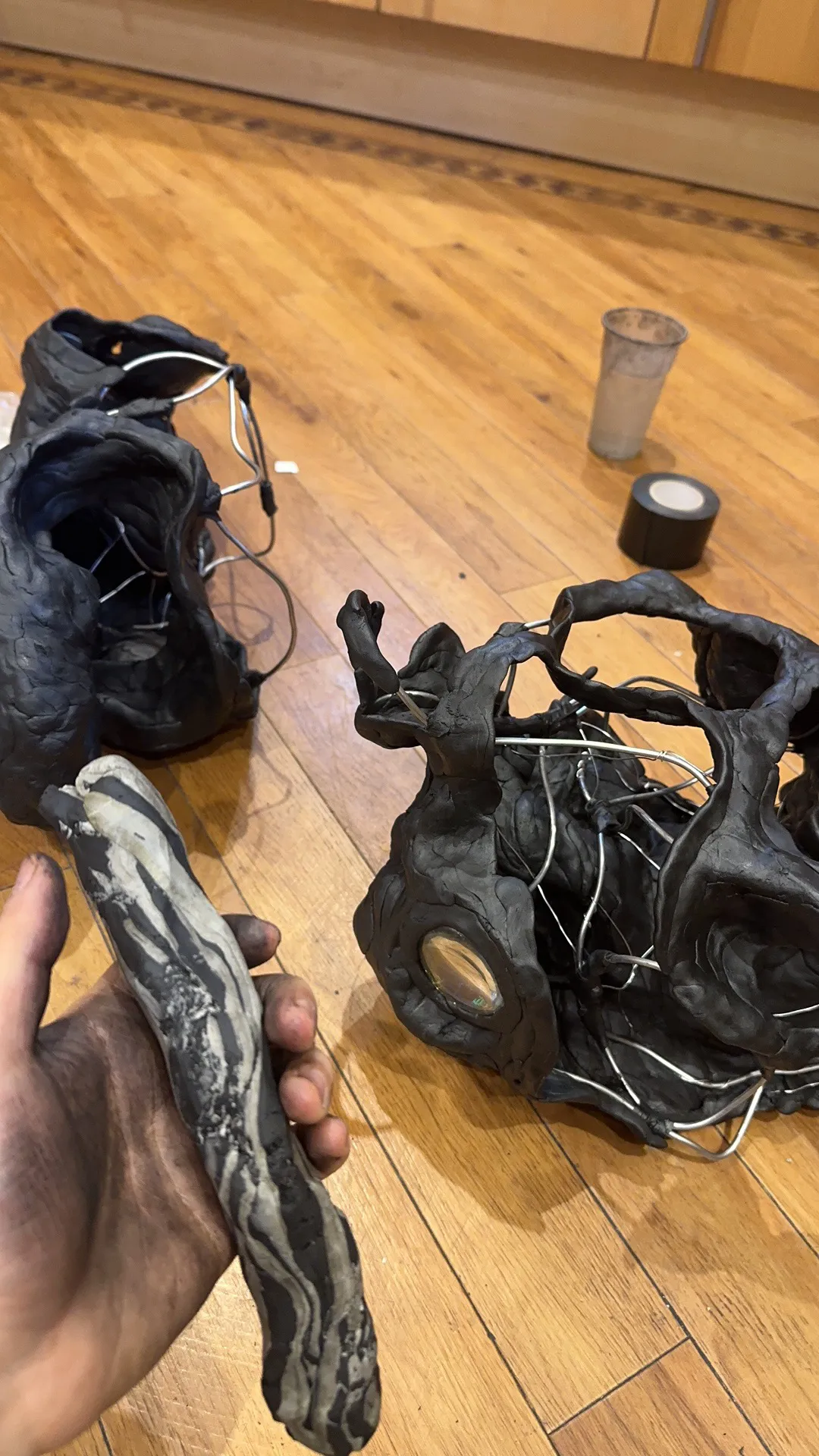
Kneading and constructing the sculpture's prototype
02) Polishing
Polishing to achieve a luster and shape reminiscent of the moon's surface.
Like a "theater of memory," during the process of friction, elimination, and destruction,
the dust and mist generated by polishing evoke memories.
The color of the previous layer is the texture of this moment's skin,
representing a virus, a seed, or a mold spot.
They occasionally appear, growing in places that rapid explanations cannot reach.
Thus, the past and present connect in an ambiguously fluctuating manner.
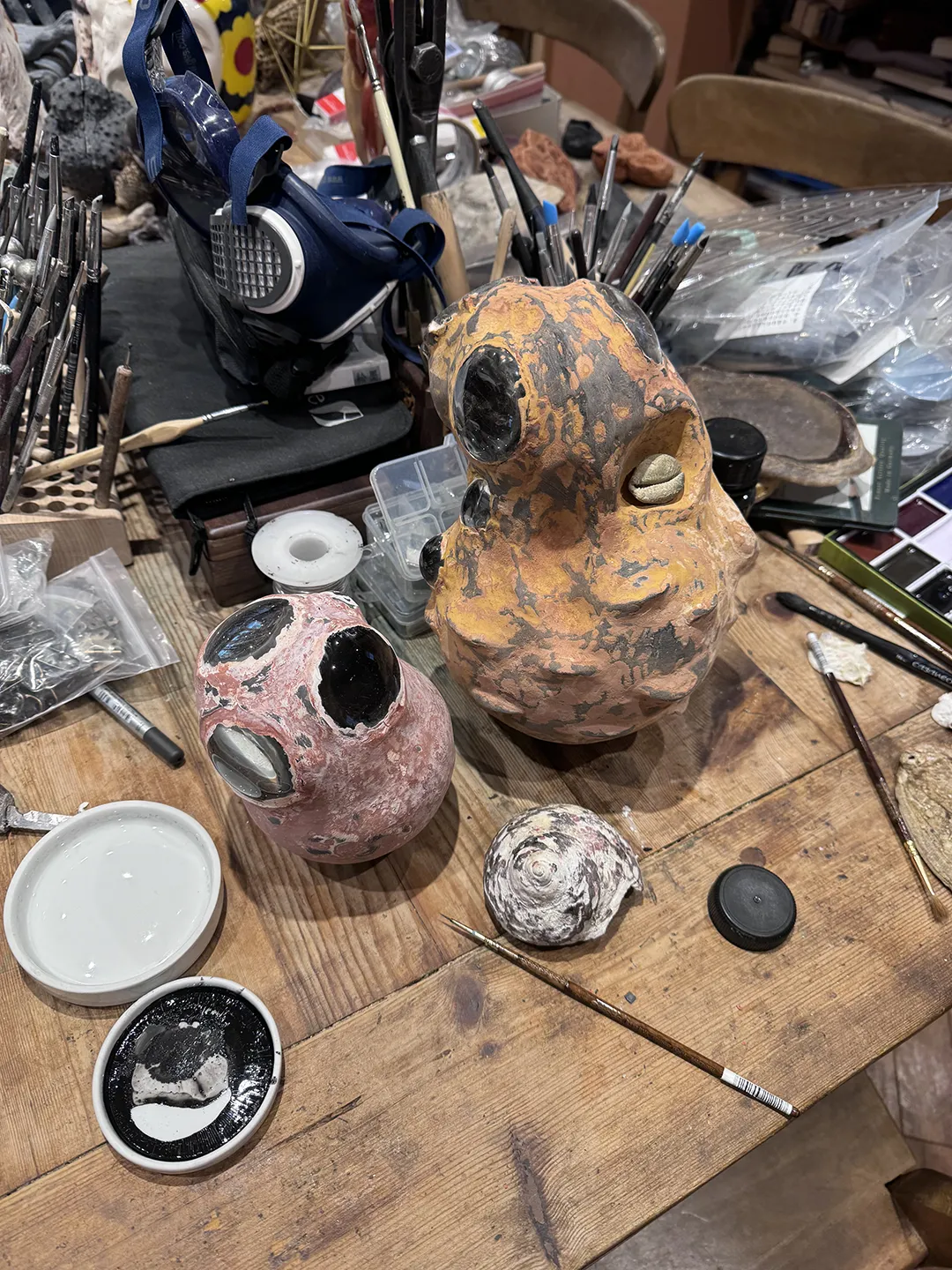
The state of the studio and unfinished works
03) Reflection
In most of Meng's works, you can see dancing human figures.
They have no facial features, resembling the branching of brain fibers in dreams,
the pulsating waves of heart vessels, and the exploratory tentacles of jellyfish or starfish.
The figures in the paintings lose their substance, becoming semi-transparent,
defying Earth's gravity, existing yet untouchable.
Like children without mothers, their origins are unspoken.
They seem to exist in a "liminal state," "hovering between life and death,"
lonely at the "threshold between dreams and reality, past and present."
Their dancing forms, moving fluidly and symbolically,
resist the domination of the carnal world through blurred dreamscapes,
deviating from the utilitarian demands of a consumerist age.
They strip away the specific narratives of the flesh, as the starry sky inverts and souls lift from the ground.
This reflects what Gabriel Marcel calls "crispation"—a tense, shell-covered form of life.
"It is as if each of us secretes a shell that slowly hardens and imprisons us."
Meng's works represent a flawed resistance against this hardening.
In the vast expanse of cosmic time, the physical body will eventually become transparent. I
am you, and you are me.
Although we may not share the same bloom period, we could all be that silent fossil on the seabed.
From organic to inorganic, dancing is the code of memory, the trace on a fossil, a crack in a compacted world.
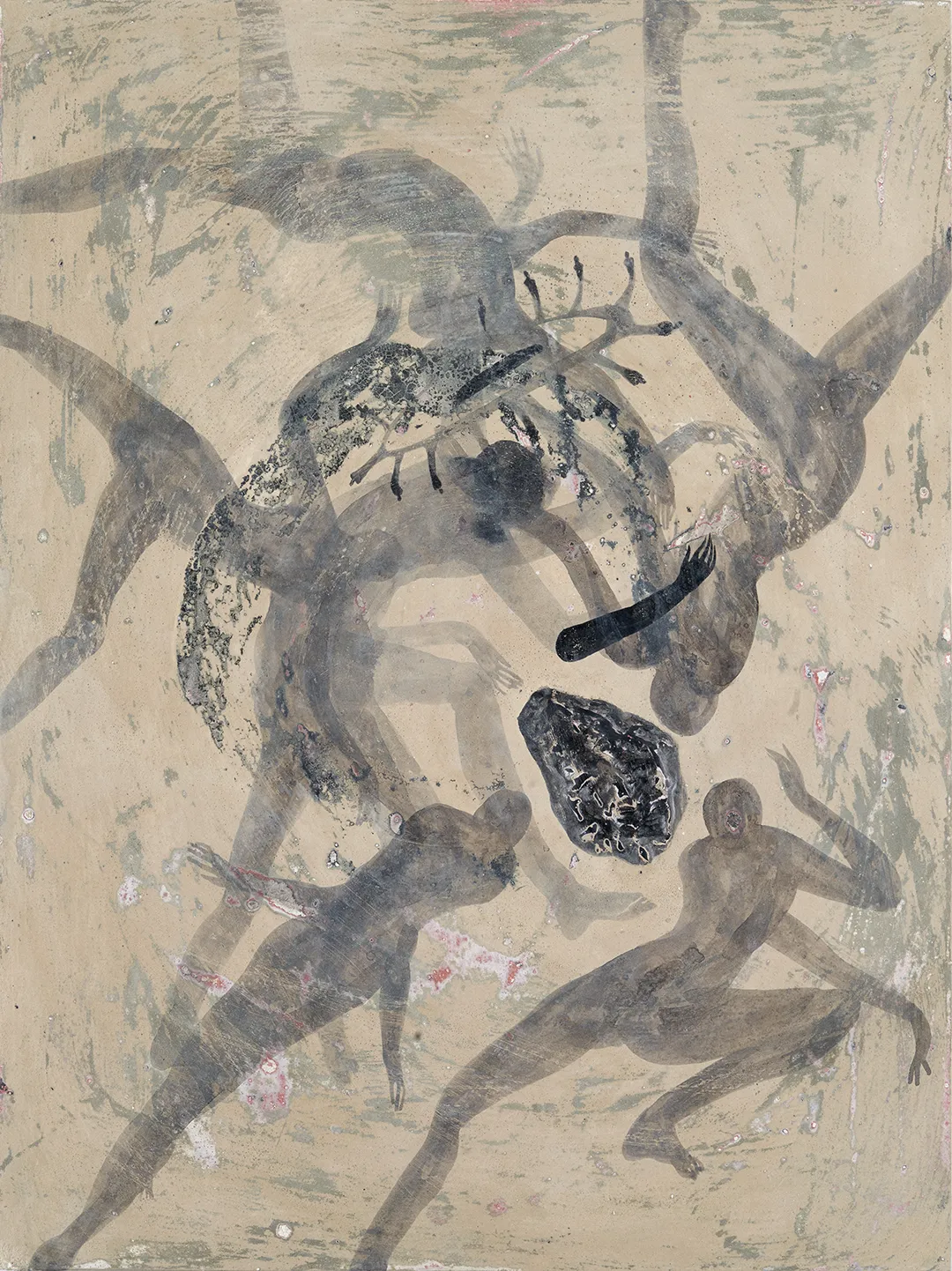
「Sustained Utilisation」
61h x 46w cm
04) Archaeological Image of Time
In 2022, Meng and his Bedouin guide reached the remote area of the "White Desert" deep in the Sahara of Egypt.
As far as the eye could see, there were bizarre, solitary white rock formations,
like a scattering of giant white mushrooms from a dream.
The silence was absolute, as if all living beings had been sealed within these hard, white structures.
However, when he crouched down under the starry sky of the Sahara and looked closely, signs of life were everywhere.
In that moment, he picked up and held in his palm sea urchin fossils and various shells.
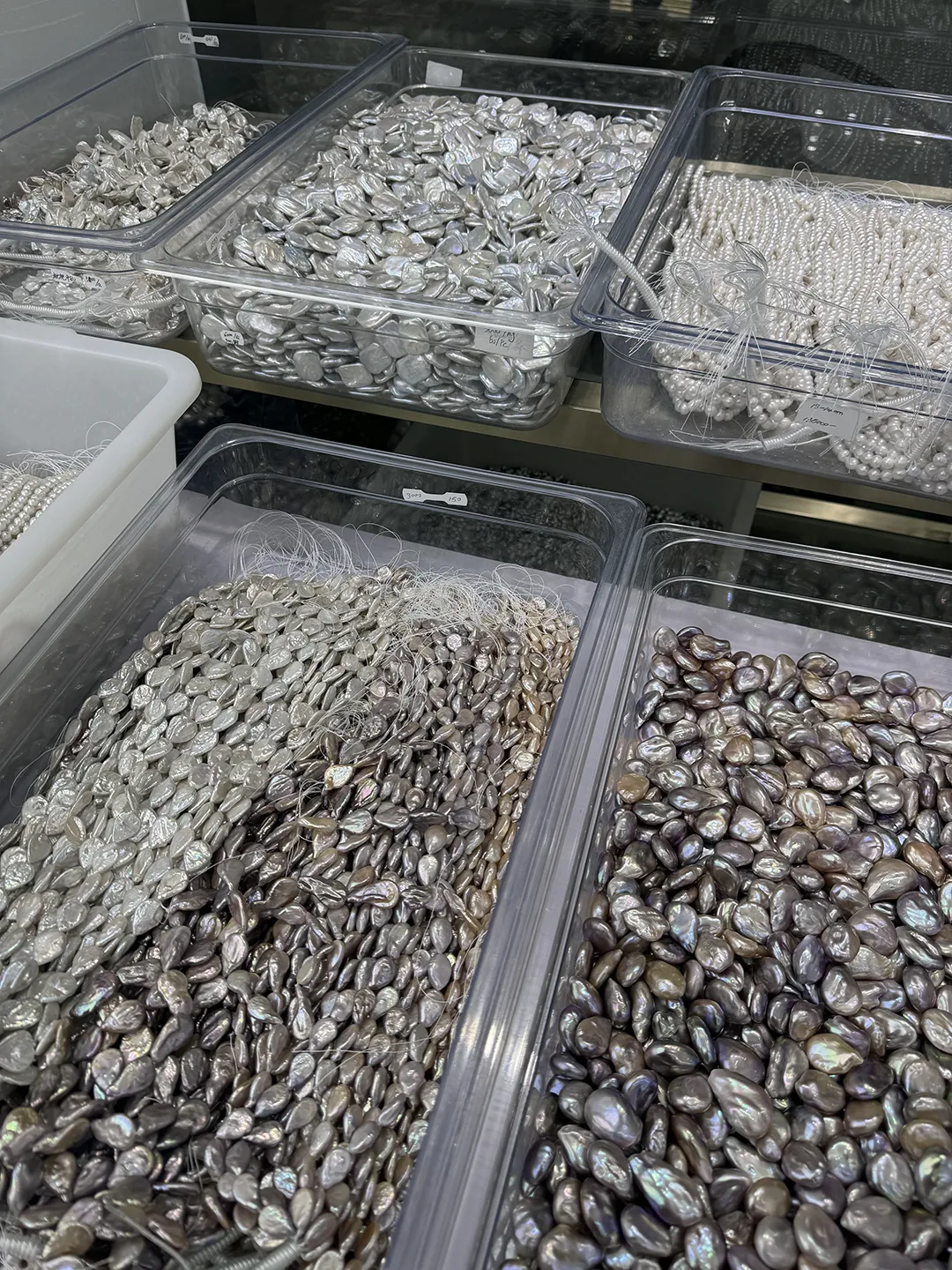
Purchasing materials at the pearl market
Most of his travels and even his purchases in the studio are related to these "objects" named after various nouns.
These include Timor Sea fossils, Chinese black snail fossils, dragon bone starfish,
petrified wood, Han dynasty bronze pieces, iron meteorites, starfish fossils,
pearls, Roman bronze arrowheads, ancient Greek glass beads, and marble marbles.
In his works, these silent nouns are like recordings, and he is the sound engineer.
Through the experience of collecting and gathering these "objects,"
his curiosity and inquiry bring these fragmented items to life again in the chaotic space of his nonlinear narrative creation.
You bloom at one moment, I wither at another.
Although this placement creation is occasional, it conceals his discussions on various topics.
The embedded presence of "objects" from different times, spaces,
geographies, and civilizations bears witness to the rise and fall of the human community.
In the overlapping and interpretation of the drifting past, present, and future, a visual "archaeological image of time" is formed.
At this moment, these "objects" are grand and resonate profoundly.
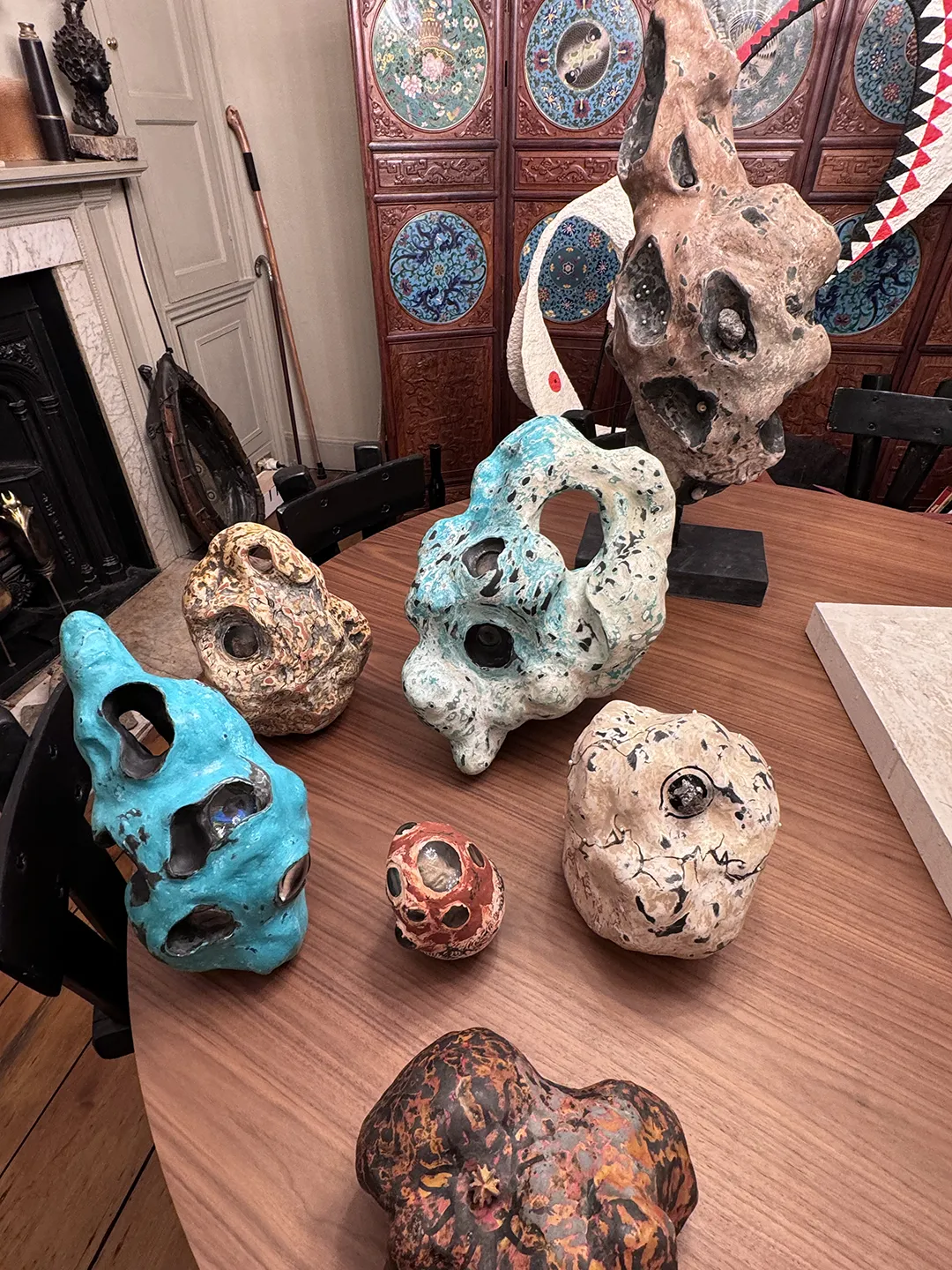
Collection of unfinished pieces in the studio
05) Paris Botanical Garden
At four in the afternoon, Meng arrived at the Paris Botanical Garden from London.
He walked along the shaded path beside the giant glass greenhouse with his friend who studies ferns.
The sunlight was just right.
He stopped in front of a plant, having just returned to Europe from a residency on a remote island in Panama.
They talked about the plant suddenly illuminated by the sun. Some of its leaves had very regular cracks.
He explained that this was the work of Panama leaf-cutting ants.
When the leaves were young and still curled up, they were nibbled by the larvae of the leaf-cutting ants.
As the leaves grew and unfolded, they turned into a series of small holes, forming a regular geometric pattern.
In his works, this kind of wandering presence or absence of species is omnipresent, either hidden or highlighted.
This integration, mixture, and chaos, expressed in an indistinct state that is difficult to discuss, forms his expression of the void.
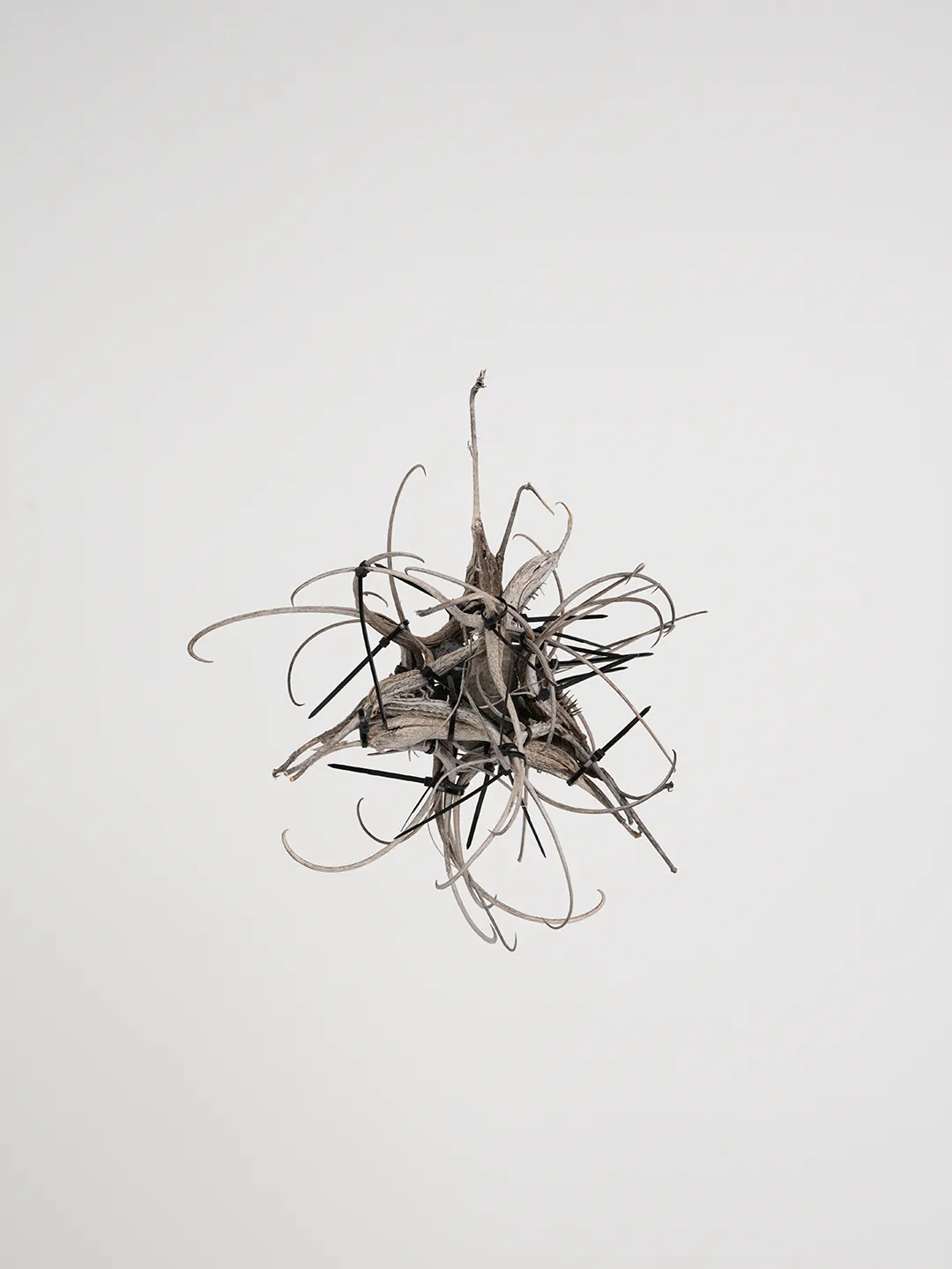
Madagascar rattan, plastic, Guatemalan Mayan ceramic figurines
06) A Person From the Proustian Era
Meng is an artist, yet he possesses the meticulous logical thinking of a scientist.
He has collected many fossils of ancient marine organisms, various ambers,
the brilliant stones of certain fish, bird nests from tropical rainforests,
and even a specimen of a jackdaw with a focused expression, its eyes still deep and penetrating.
These remnants of once-living Earth creatures, which have left behind physical traces, represent his collection related to the sedimentation of time.
He himself seems like a person from the Proustian era, painting after writing poetry, or writing poetry after painting.
Despite his youth, he is obsessed with various stages, musical theaters, and dance dramas.
He watches his favorite plays repeatedly.
This time, he invited me to see Pina Bausch's Wuppertal Dance Theater's famous production "Bluebeard."
Meng said, "'Bluebeard' premiered in Germany in 1977, with music from Béla Bartók's opera of the same name.
Due to music copyright protection, this impactful dance drama by Pina Bausch was halted for many years, but the copyright has just been lifted in the UK."
When the stage covered with leaves was frozen in light, and the fallen woman was dragged by the man again and again,
her thighs wilting as she struggled and entangled, the entire scene was filled with the raw sounds of violent clashes.
The tape recorder repeatedly played Béla Bartók's opera.
I was struck by this sudden assault and overwhelmed by the impact and the demise on this stage.
I am grateful for my continually miraculous encounters.
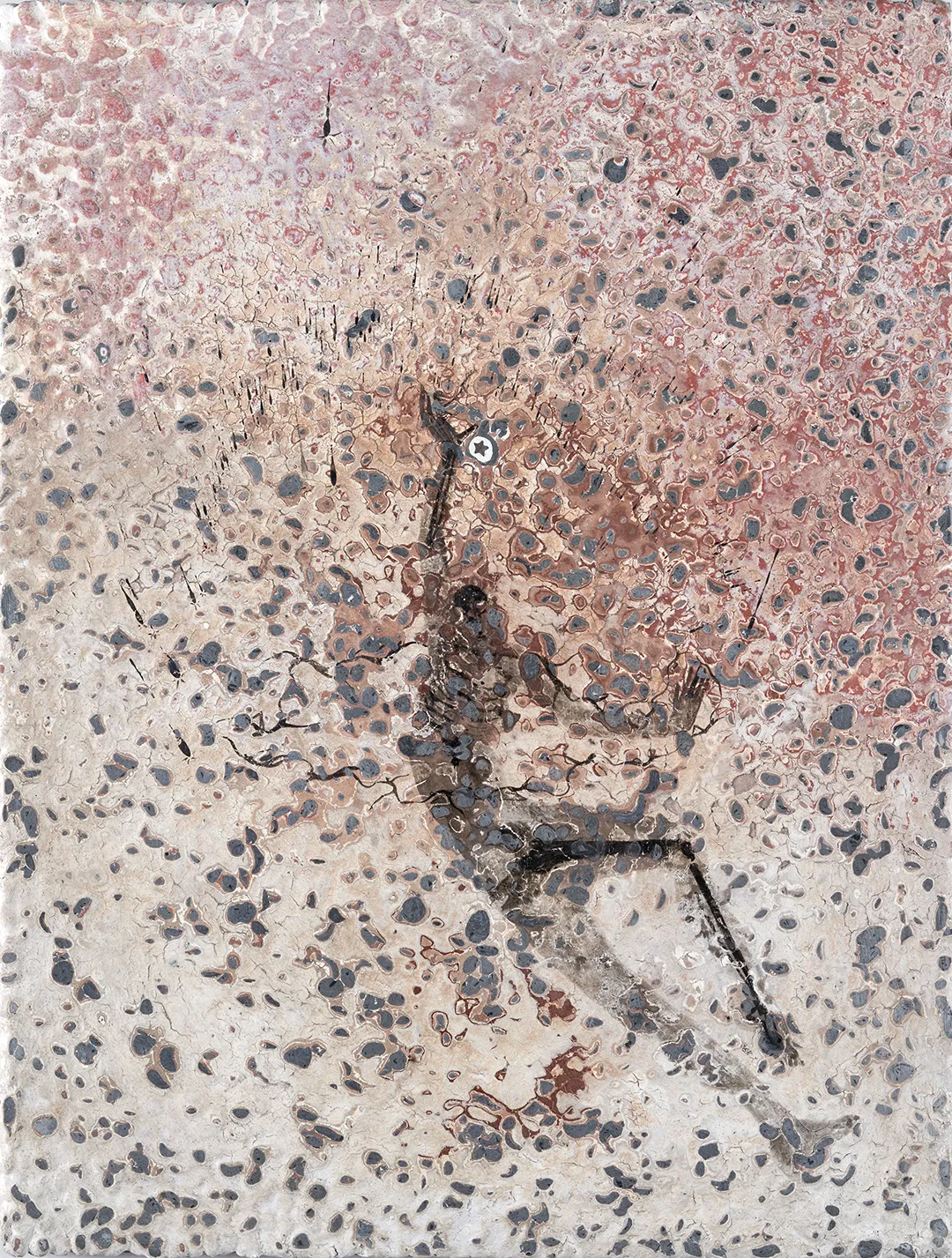
「Admirer」
Wooden board, ink, mineral powder, resin, shell powder, deerskin glue, wax
46h x 61w x 5.5d cm
2024
07) Speaking Sculpture
Their sounds can attract the presence of ancestors.
The Japanese Zen monk Dogen wrote in "Uji" (The Theory of Time):
"Sometimes standing on the mountaintop, sometimes walking at the bottom of the deep sea.
Sometimes a twelve-foot lion, sometimes a dew-covered pole. All are times, and all times are present..."
Meng's sculptures contain ancient fossils, with animals that lived hundreds of millions of years ago.
In his sculptures, they have come to life in a new way, becoming dancing spirits that connect with us across the eons.
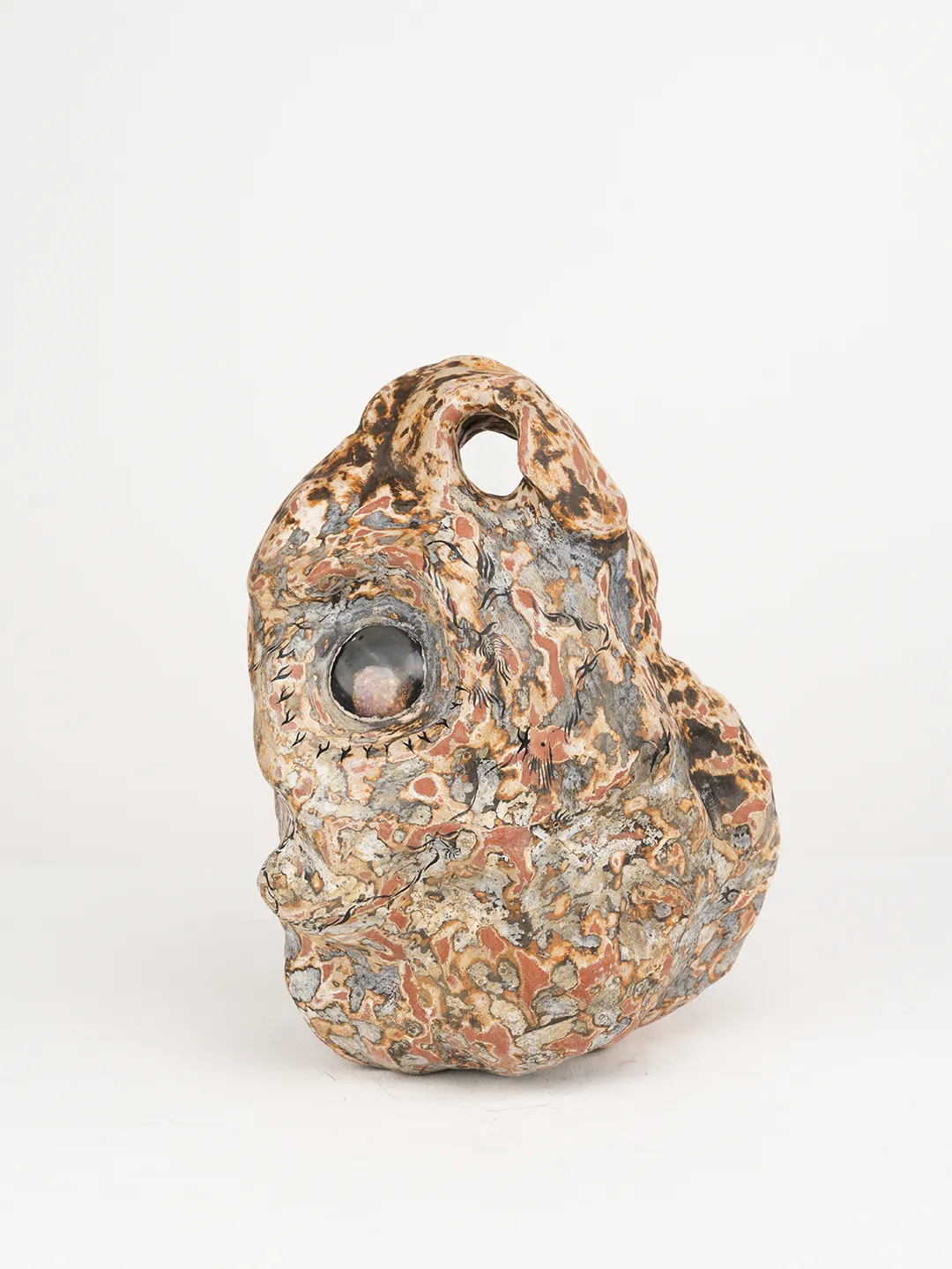
Sculpture Series: Stone Creation
Contains Roman bronze arrowheads, Greek glass beads, fossils, minerals, and more.
08) 88 Star Chart
A text in memory of Walter Benjamin:
In that era, the stones in the earth's womb and the stars hanging high in the sky still cared about human destiny
—
unlike today, where under the explanation of natural laws, heaven and earth have become indifferent,
and all things are indifferent to people's experiences.
The world is silent,
without any sound of communication with humans, nor any guiding voice for them.
Those undiscovered celestial bodies no longer play a role in astrology.
Many unique newly discovered stones are strictly measured, weighed, tested for density, and judged for their properties.
"But the stones no longer tell us anything, nor do they bring us any benefits or insights.
The time when they could converse with humanity has gone forever."
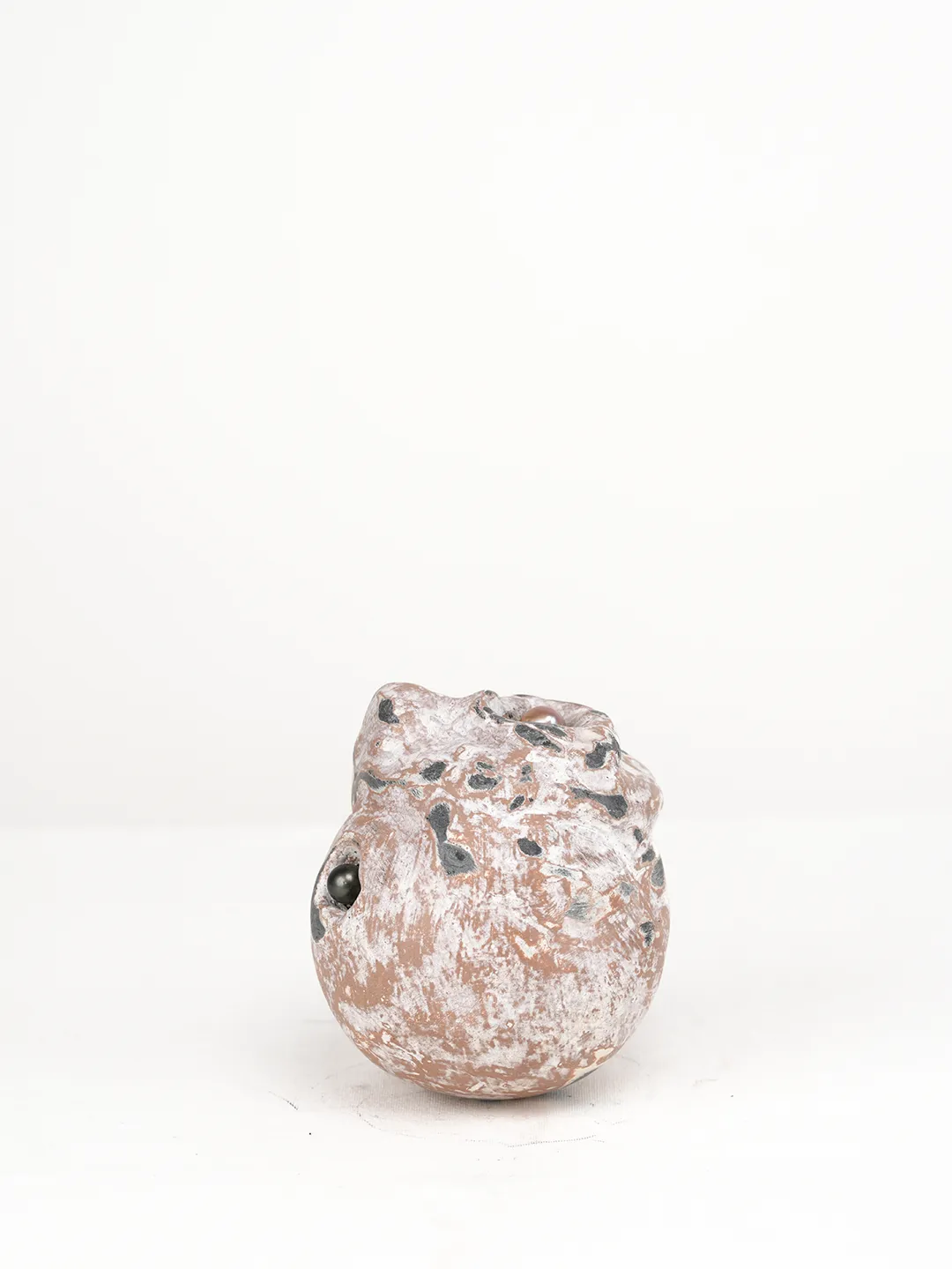
Sculpture Series: Stone Creation
Contains seawater pearls, freshwater pearls, and iron powder.